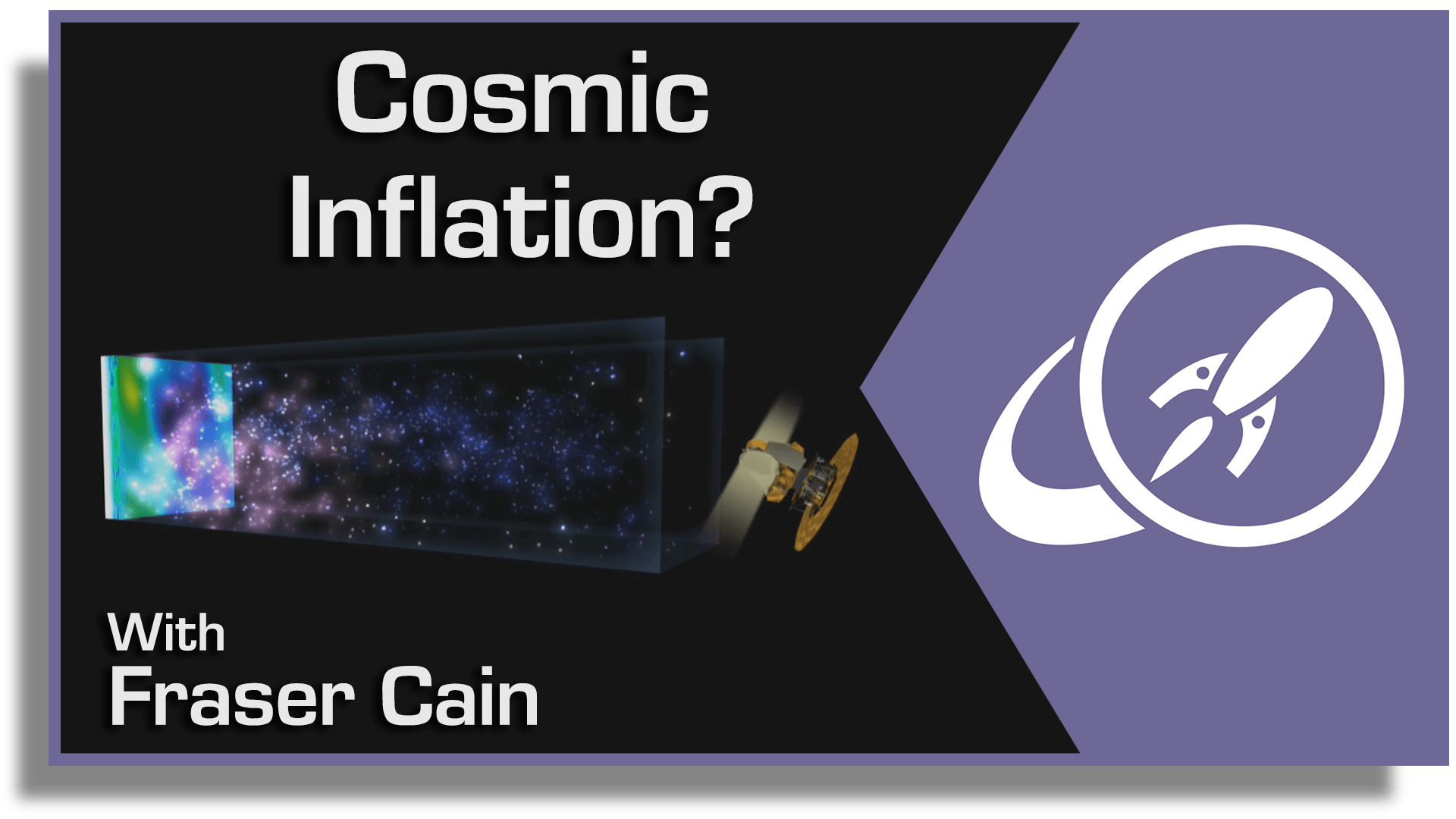Cosmology has had several ground-breaking discoveries over the last 100+ years since Einstein developed his theory of relativity. Two of the most prominent were the discovery of the Cosmic Microwave Background (CMB) in 1968 and the confirmation of gravitational waves in 2015. Each utilized different tools, but both lent credence to the Big Bang Theory, which relates to the universe’s formation. However, we still don’t understand a vital part of that formation, and a new review paper by Rishav Roshan and Graham White at the University of Southampton suggests that we might be able to make some headway on our one-second “gap” in knowledge by using our newfound understanding of gravitational waves.
Continue reading “How Gravitational Waves Could Let Us See the First Moments After the Big Bang”What Was Cosmic Inflation? The Quest to Understand the Earliest Universe
The Big Bang. The discovery that the Universe has been expanding for billions of years is one of the biggest revelations in the history of science. In a single moment, the entire Universe popped into existence, and has been expanding ever since.
We know this because of multiple lines of evidence: the cosmic microwave background radiation, the ratio of elements in the Universe, etc. But the most compelling one is just the simple fact that everything is expanding away from everything else. Which means, that if you run the clock backwards, the Universe was once an extremely hot dense region
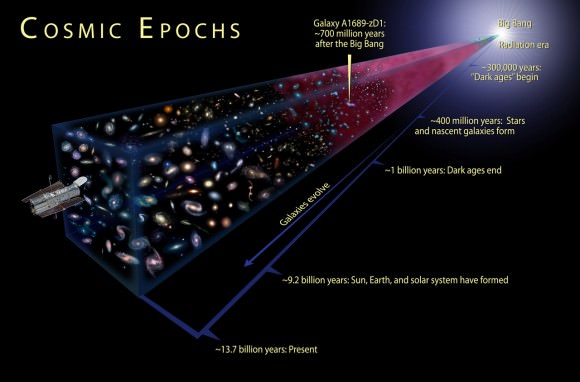
Let’s go backwards in time, billions of years. The closer you get to the Big Bang, the closer everything was, and the hotter it was. When you reach about 380,000 years after the Big Bang, the entire Universe was so hot that all matter was ionized, with atomic nuclei and electrons buzzing around each other.
Keep going backwards, and the entire Universe was the temperature and density of a star, which fused together the primordial helium and other elements that we see to this day.
Continue to the beginning of time, and there was a point where everything was so hot that atoms themselves couldn’t hold together, breaking into their constituent protons and neutrons. Further back still and even atoms break apart into quarks. And before that, it’s just a big question mark. An infinitely dense Universe cosmologists called the singularity.
When you look out into the Universe in all directions, you see the cosmic microwave background radiation. That’s that point when the Universe cooled down so that light could travel freely through space.
And the temperature of this radiation is almost exactly the same in all directions that you look. There are tiny tiny variations, detectable only by the most sensitive instruments.
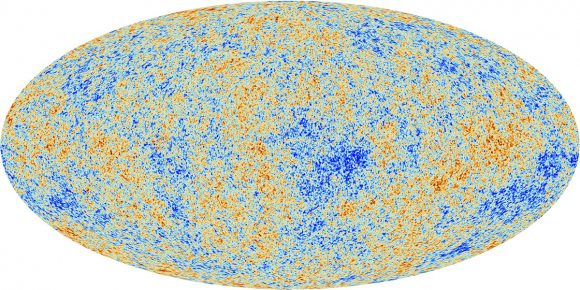
When two things are the same temperature, like a spoon in your coffee, it means that those two things have had an opportunity to interact. The coffee transferred heat to the spoon, and now their temperatures have equalized.
When we see this in opposite sides of the Universe, that means that at some point, in the ancient past, those two regions were touching. That spot where the light left 13.8 billion years ago on your left, was once directly touching that spot on your right that also emitted its light 13.8 billion years ago.
This is a great theory, but there’s a problem: The Universe never had time for those opposite regions to touch. For the Universe to have the uniform temperature we see today, it would have needed to spend enough time mixing together. But it didn’t have enough time, in fact, the Universe didn’t have any time to exchange temperature.
Imagine you dipped that spoon into the coffee and then pulled it out moments later before the heat could transfer, and yet the coffee and spoon are exactly the same temperature. What’s going on?
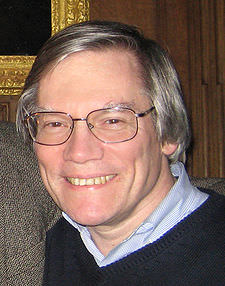
To address this problem, the cosmologist Alan Guth proposed the idea of cosmic inflation in 1980. That moments after the Big Bang, the entire Universe expanded dramatically.
And by “moments”, I mean that the inflationary period started when the Universe was only 10^-36 seconds old, and ended when the Universe was 10^-32 seconds old.
And by “expanded dramatically”, I mean that it got 10^26 times larger. That’s a 1 followed by 26 zeroes.
Before inflation, the observable Universe was smaller than an atom. After inflation, it was about 0.88 millimeters. Today, those regions have been stretched 93 billion light-years apart.
This concept of inflation was further developed by cosmologists Andrei Linde, Paul Steinhardt, Andy Albrecht and others.
Inflation resolved some of the shortcomings of the Big Bang Theory.
The first is known as the flatness problem. The most sensitive satellites we have today measure the Universe as flat. Not like a piece-of-paper-flat, but flat in the sense that parallel lines will remain parallel forever as they travel through the Universe. Under the original Big Bang cosmology, you would expect the curvature of the Universe to grow with time.
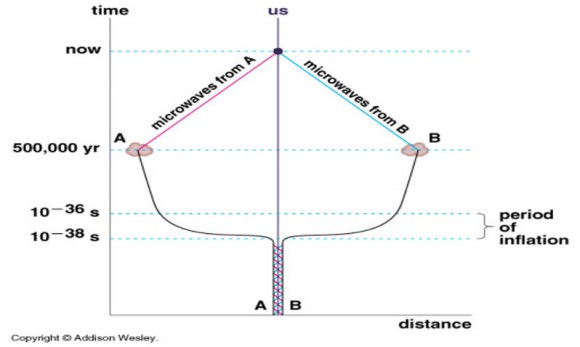
The second is the horizon problem. And this is the problem I mentioned above, that two regions of the Universe shouldn’t have been able to see each other and interact long enough to be the same temperature.
The third is the monopole problem. According to the original Big Bang theory, there should be a vast number of heavy, stable “monopoles”, or a magnetic particle with only a single pole. Inflation diluted the number of monopoles in the Universe so don’t detect them today.
Although the cosmic microwave background radiation appears mostly even across the sky, there could still be evidence of that inflationary period baked into it.

In order to do this, astronomers have been focusing on searching for primordial gravitational waves. These are different from the gravitational waves generated through the collision of massive objects. Primordial gravitational waves are the echoes from that inflationary period which should be theoretically detectable through the polarization, or orientation, of light in the cosmic microwave background radiation.
A collaboration of scientists used an instrument known as the Background Imaging of Cosmic Extragalactic Polarization (or BICEP2) to search for this polarization, and in 2014, they announced that maybe, just maybe, they had detected it, proving the theory of cosmic inflation was correct.
Unfortunately, another team working with the space-based Planck telescope posted evidence that the fluctuations they saw could be fully explained by intervening dust in the Milky Way.
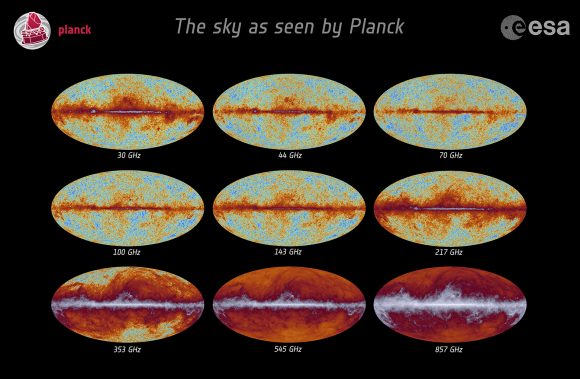
The problem is that BICEP2 and Planck are designed to search for different frequencies. In order to really get to the bottom of this question, more searches need to be done, scanning a series of overlapping frequencies. And that’s in the works now.
BICEP2 and Planck and the newly developed South Pole Telescope as well as some observatories in Chile are all scanning the skies at different frequencies at the same time. Distortion from various types of foreground objects, like dust or radiation should be brighter or dimmer in the different frequencies, while the light from the cosmic microwave background radiation should remain constant throughout.
There are more telescopes, searching more wavelengths of light, searching more of the sky. We could know the answer to this question with more certainty shortly.
One of the most interesting implications of cosmic inflation, if proven, is that our Universe is actually just one in a vast multiverse. While the Universe was undergoing that dramatic expansion, it could have created bubbles of spacetime that spawned other universes, with different laws of physics.

In fact, the father of inflation, Alan Guth, said, “It’s hard to build models of inflation that don’t lead to a multiverse.”
And so, if inflation does eventually get confirmed, then we’ll have a whole multiverse to search for in the cosmic microwave background radiation.
The Big Bang was one of the greatest theories in the history of science. Although it did have a few problems, cosmic inflation was developed to address them. Although there have been a few false starts, astronomers are now performing a sensitive enough search that they might find evidence of this amazing inflationary period. And then it’ll be Nobel Prizes all around.


